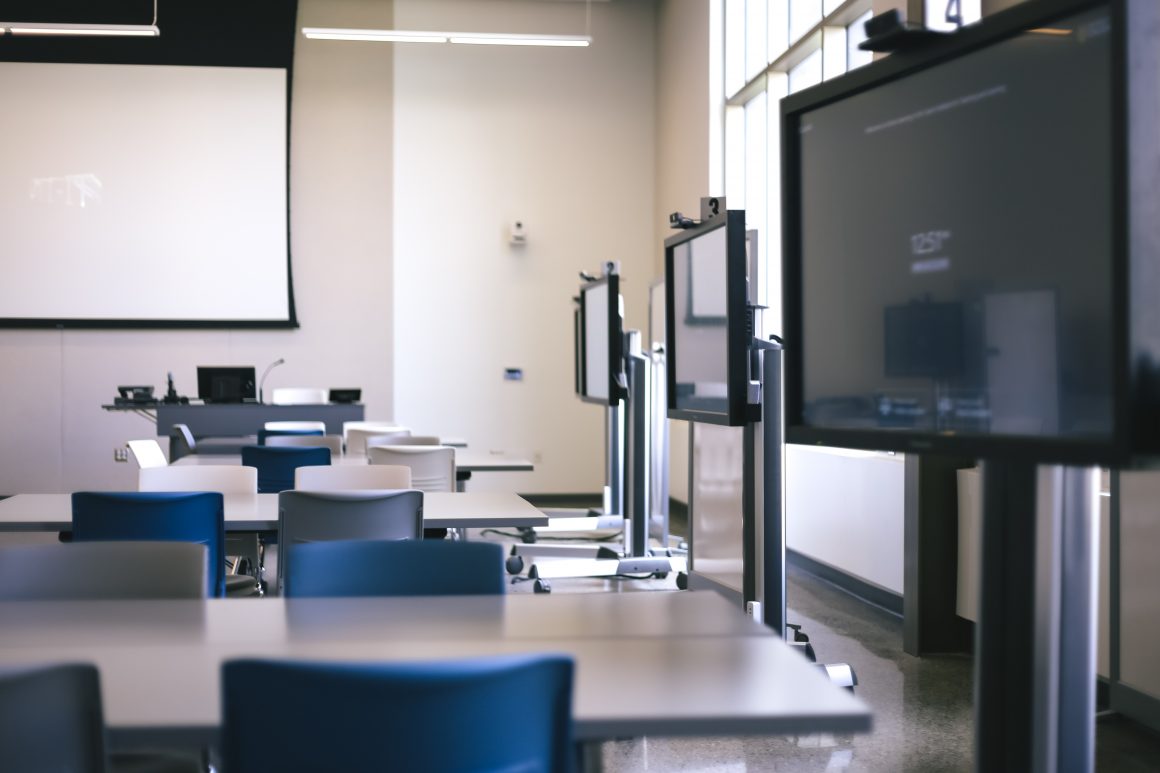
2018–19 Teaching and Learning grants include second-language focus
By Matty Hume, August 30 2018 —
The winners of the 2018–19 University of Calgary Teaching and Learning grants were announced in July, with a total of $522,999.32 being allocated to recipients. The grants, which are funded by the Provost’s Office, intend to enhance student experience by providing various opportunities to instructors and researchers in three areas: practice grants, lesson study grants and Scholarship of Teaching and Learning (SoTL) grants. This year, the 23 recipients exemplify a vast array of expertise, from “Behavioural Neuroscience” to “Wearable Design for Mental Health.”
Angela George, an assistant professor in the School of Languages, Linguistics, Literatures and Cultures, is one of this year’s recipients. She is receiving practice grant funding for her project, “Increasing Interpersonal Skills and Oral Proficiency in the Second Language Classroom.” According to George, whose research focuses on how languages — particularly Spanish — are acquired or learned, says a primary focus of her project is giving Spanish students a more tangible benchmark of their progress.
“One thing I noticed is [when] students enter [language studies], their goal is to become fluent in Spanish after one semester,” George said. “Which is great but I don’t think most of them will become fluent after one semester, depending on how they define fluent.”
As a practice grant, George’s project included her attendance at a workshop that focused on providing students with a better idea of the skills they can acquire in entry-level language courses.
“Basically it helps the students with a couple of things, [like] what they can do with speaking and listening. So they may not be fluent but there’s a whole list of things they can do at the end of the semester,” George said. “This helps them assess their own skills, so it’s about self-assessment. I actually already attended the workshop. It was an intense four days and it talks about getting students from ‘beginning to intermediate,’ all the way up to ‘advanced to superior.’ ”
For researchers hoping to receive a Teaching and Learning grant in the future, George said an integral part of the application process is highlighting a project’s utility while connecting it to education research itself.
“First you write an abstract, then you have to ground it in context. I think the key was that I did cite some of the research in teaching and learning — that’s helpful for those that want the grant,” she said. “You give a timeline of what you want to do. This was the practice grant, so you attend a workshop or a conference and say how you’re going to use it in the classroom and how you will collaborate with students. A lot of the focus is what the students will get out of it.”
According to the Taylor Institute for Teaching and Learning, all applications are reviewed by the university’s Grants Adjudication Committees.
“The committees are comprised of two faculty members, a student representative, a staff member from the Taylor Institute for Teaching and Learning and the Taylor Institute’s Academic Director,” the Taylor Institute said in a statement to the Gauntlet. “Evaluations are based on the following criteria: they are grounded in the context of teaching and learning at the University of Calgary, they are anchored by compelling questions or goals related to teaching and learning, their activities are aligned with those questions and goals, they demonstrate clear potential for positive impact on teaching and learning [and] they contain appropriate budgets and that they are written with clarity and completeness.”
For George, the Teaching and Learning grants are an effort worth maintaining moving forward.
“I think it’s beneficial to improve the teaching and also being able to offer more workshops within our own school,” she said.
